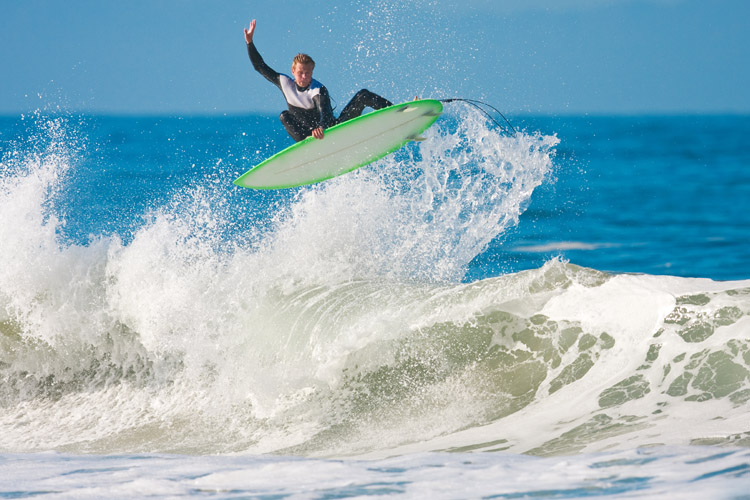The history of surfing is rich and vibrant. There are multiple facts and figures that contributed to the evolution of wave riding. Some are strange; others are deeply bizarre.
From innovative surf gear to maritime science, surfing has been collecting stories, records, and achievements. Did you know that...
1. The Hawaiian Islands are the most isolated archipelago on planet Earth;
2. The windiest surf city in the world is Wellington, the capital of New Zealand;
3. The tallest tsunami so far recorded was the 1958 Lituya Bay mega tsunami, which had a record height of 524 meters (1,740 feet);
4. Polyurethane foam was created during World War II as insulation for refrigerators and airplanes;
5. The first competition won by a thruster surfboard was the Bells Beach Classic in 1981;
6. Bodyboarding legend Mike Stewart was the first to surf Teahupoo in 1987;
7. Kelly Slater generally starts his day drinking hot water and lemon;
8. Swells were used by Polynesian navigators to maintain course when no other clues were available, like on foggy nights;
9. Tsunami waves can't be surfed because they're too fast and only made of whitewater;
10. Archimedes discovered the law of buoyancy that applies to the surfboard size chart;
11. Teahupoo, the world's heaviest wave, has claimed the lives of five surfers since 2000;
12. Surfing has been considered the 20th most dangerous sport in the world;
13. A trained surfer can hold his breath for about four minutes, while the static apnea record holder does it for more than 11 minutes;
14. The world's highest tides can be found in Canada at the Bay of Fundy. Sometimes, the difference between high and low tide is 16.3 meters (53.5 feet);
15. "Hawaiian Holiday" is the first animated short surf movie, released in 1937 by Walt Disney;
16. Mark Foo, the big wave surfer who lost his life at Mavericks, had a passion for martial arts;
17. Surf wax was first applied to a surfboard by Alfred Gallant Jr., a surfer from Los Angeles, in 1935 after observing the effect of liquid wax on the floors of his home;
18. There's a formula to calculate the number of waves you have surfed in your life;
19. Pat O'Neill, son of wetsuit inventor Jack O'Neill, is responsible for spreading the surfboard leash in the early 1970s;
20 Tom Morey, inventor of modern bodyboarding, created the rolling skeg for surfboards;
21. Edward, Prince of Wales, surfed waves in Hawaii back in 1920;
22. Phil Edwards is the first surfer of Pipeline;
23. Cymophobia is the fear of waves;
24. Agatha Christie, the famous British crime writer, surfed waves in 1924;
25. The longest wave in the world is considered to be Chicama, in Chile, where Cristobal de Col pulled 34 maneuvers in one single ride;
26. Surfers only spend 8 percent of the time riding waves;
27. Three thousand hours of cold water surfing are enough to develop surfer's ear;
28. Shaka was a kids' sign to communicate that the way was clear to jump into trains because the security guard, who had lost three middle fingers, was inattentive;
29. The Hawaiian Scale and the Bascom Method are the most popular methods of measuring wave height;
30. Lance Armstrong learned how to surf in Tenerife, Canary Islands;
31. Brian Wilson, the master behind The Beach Boys, was once arrested for failing to surf;
32. Injuries affect one in three surfers;
Do you have nice ideas for this list? Send us your surf knowledge via email to editor [at] surfertoday.com
